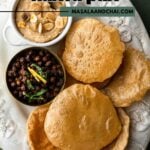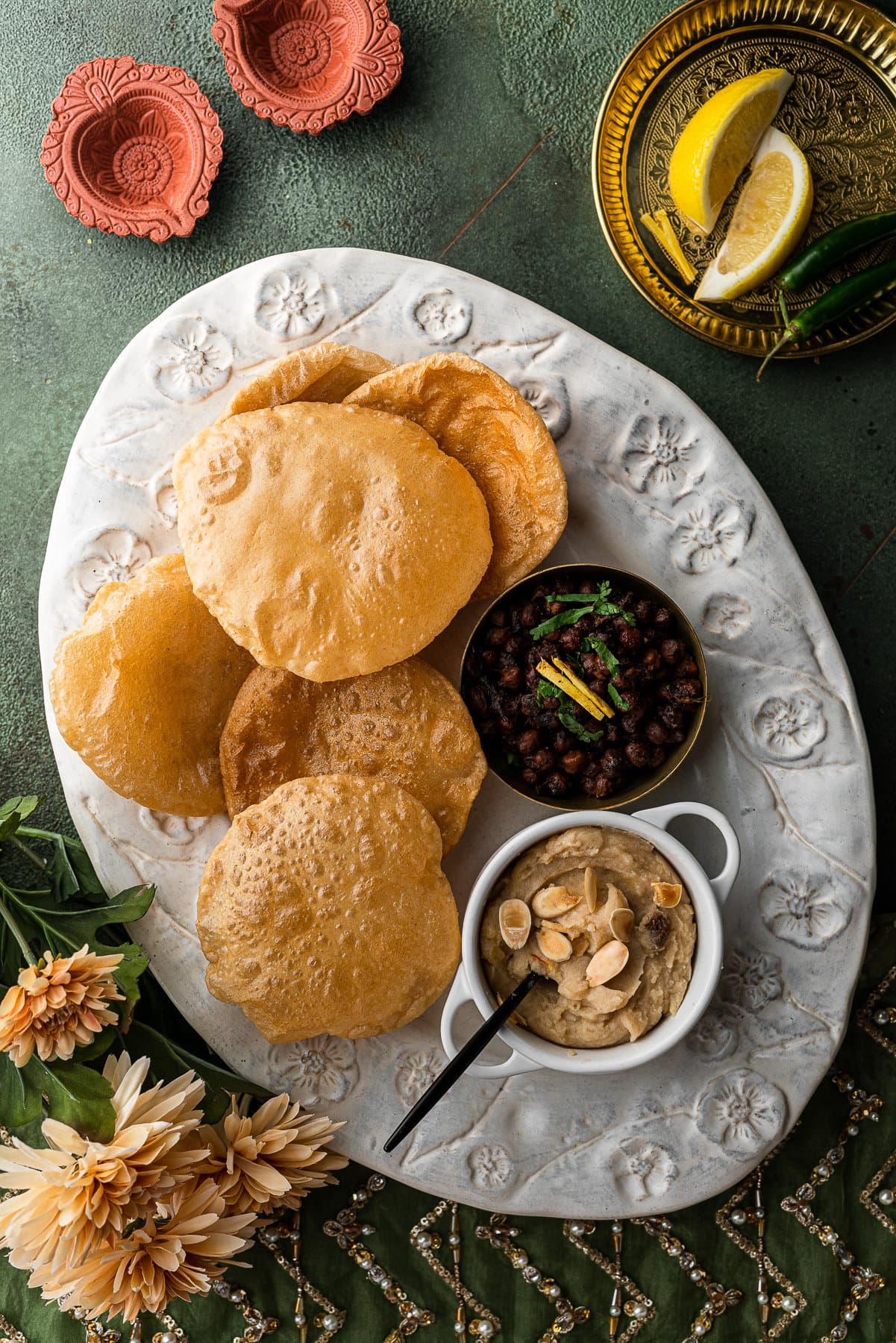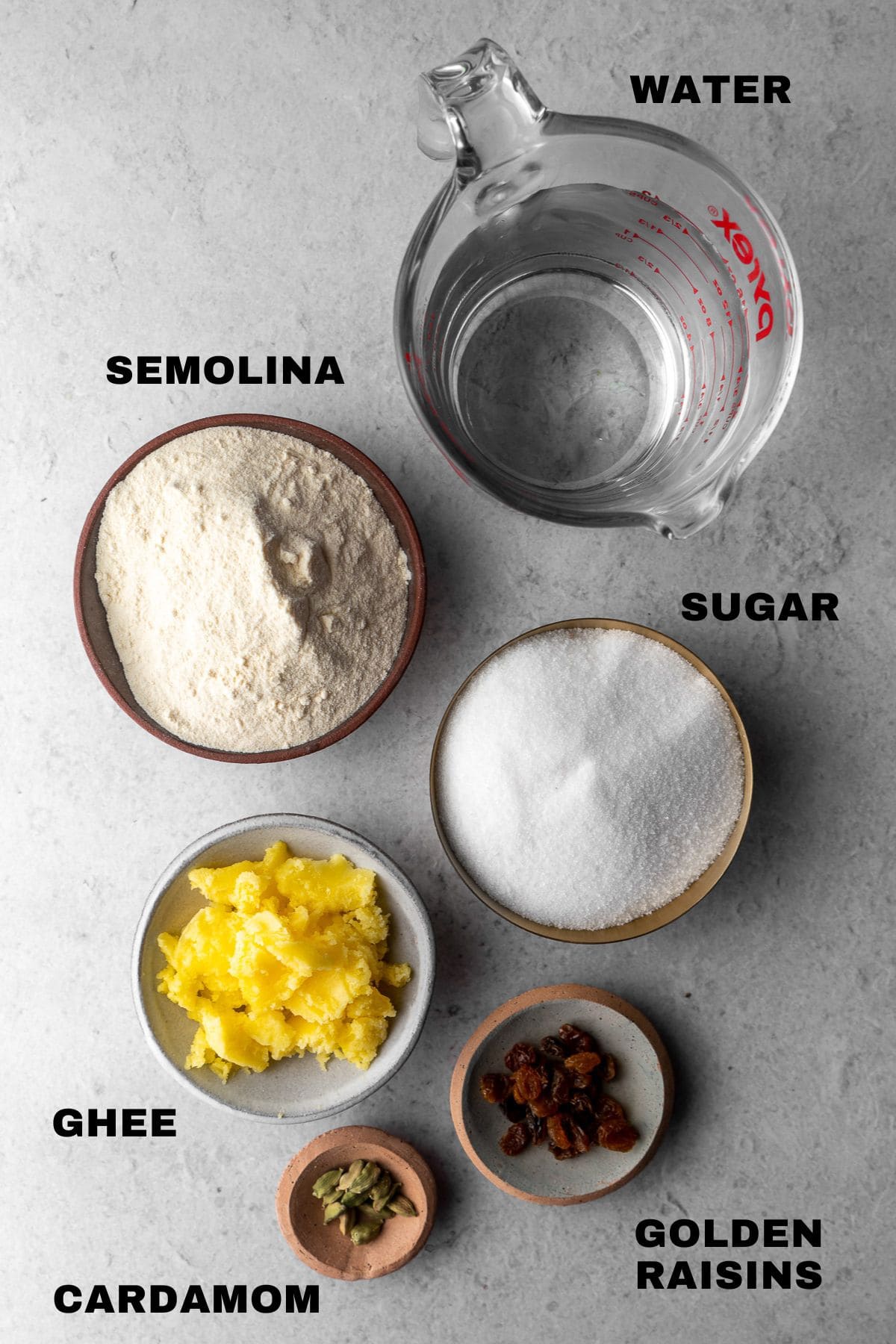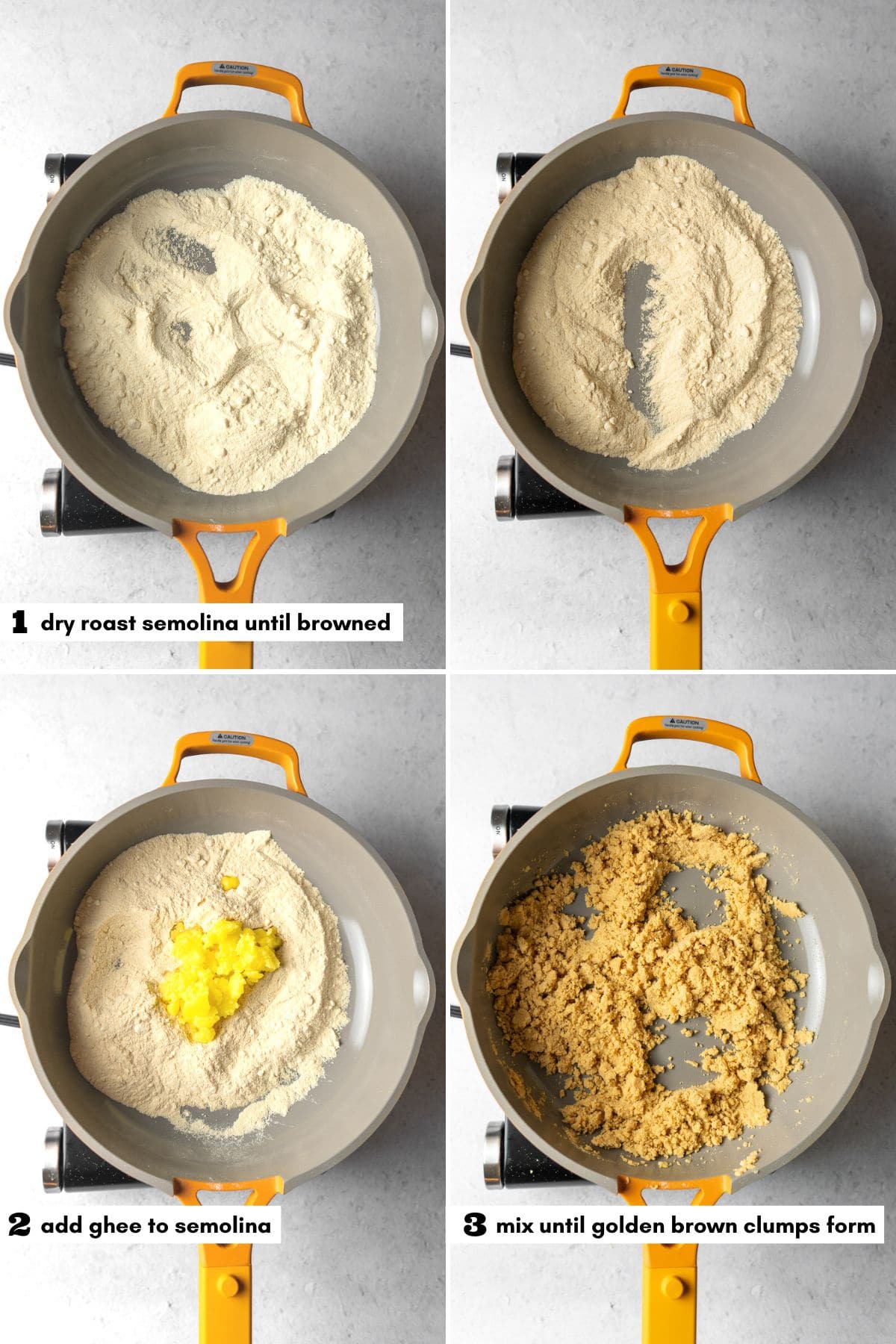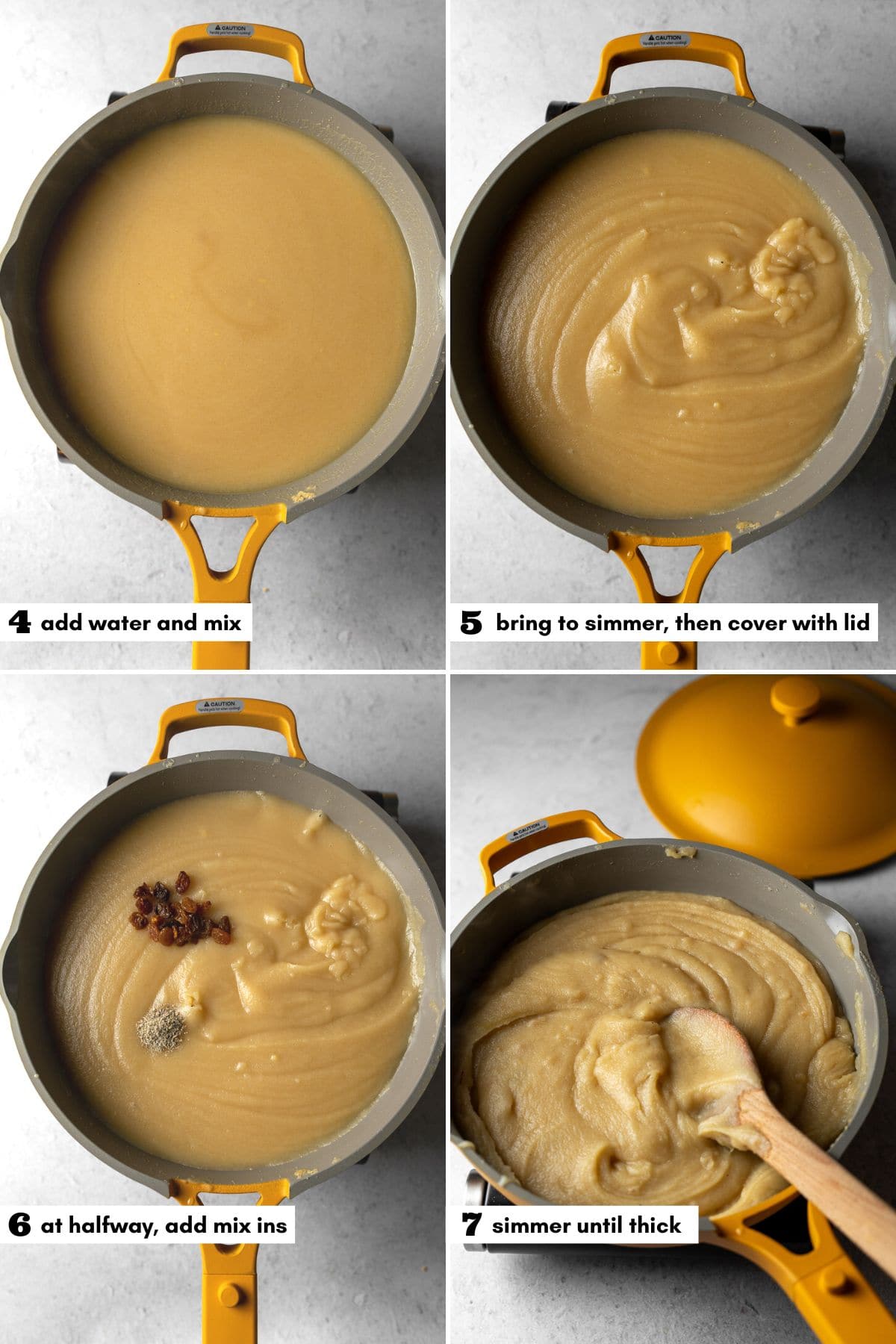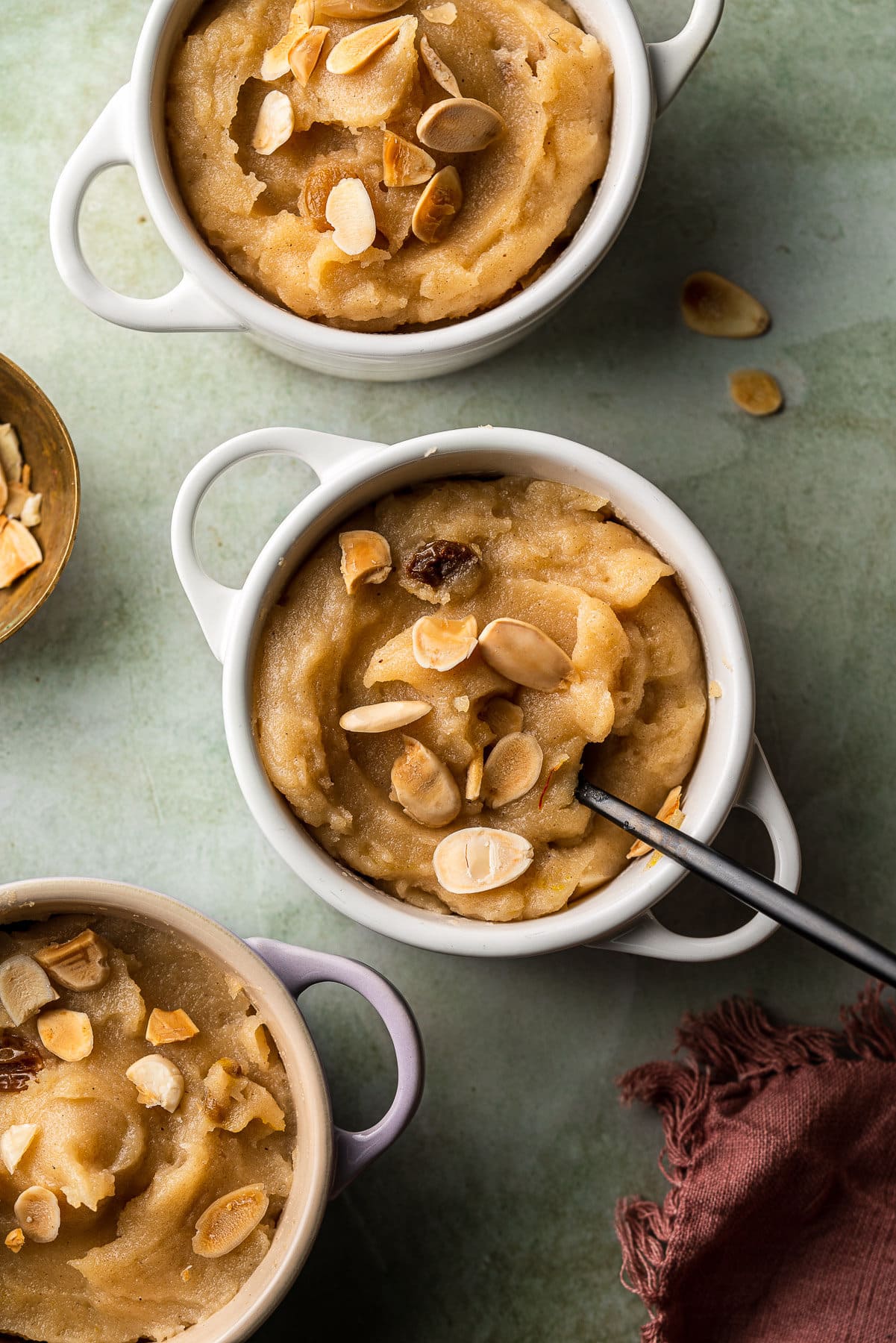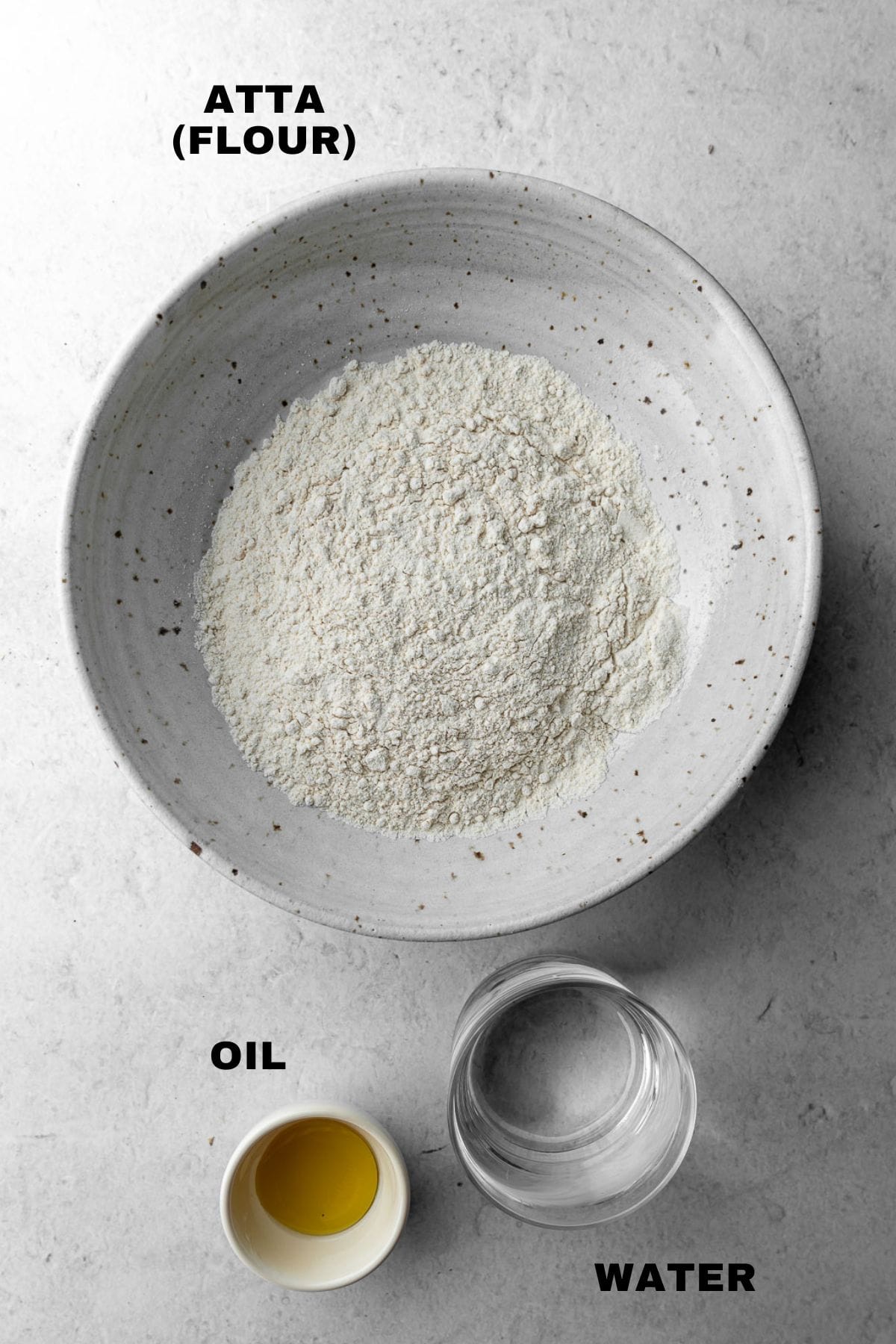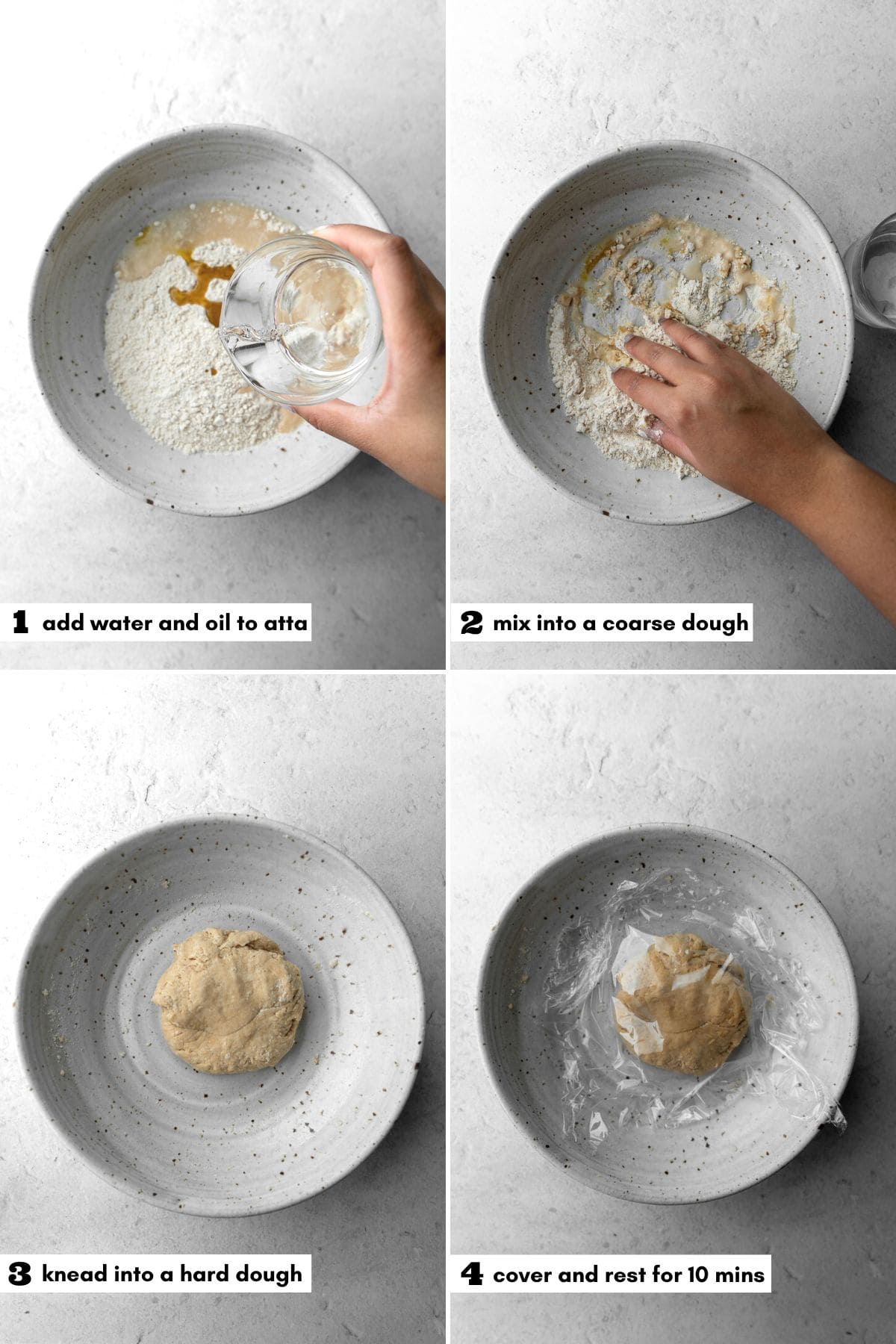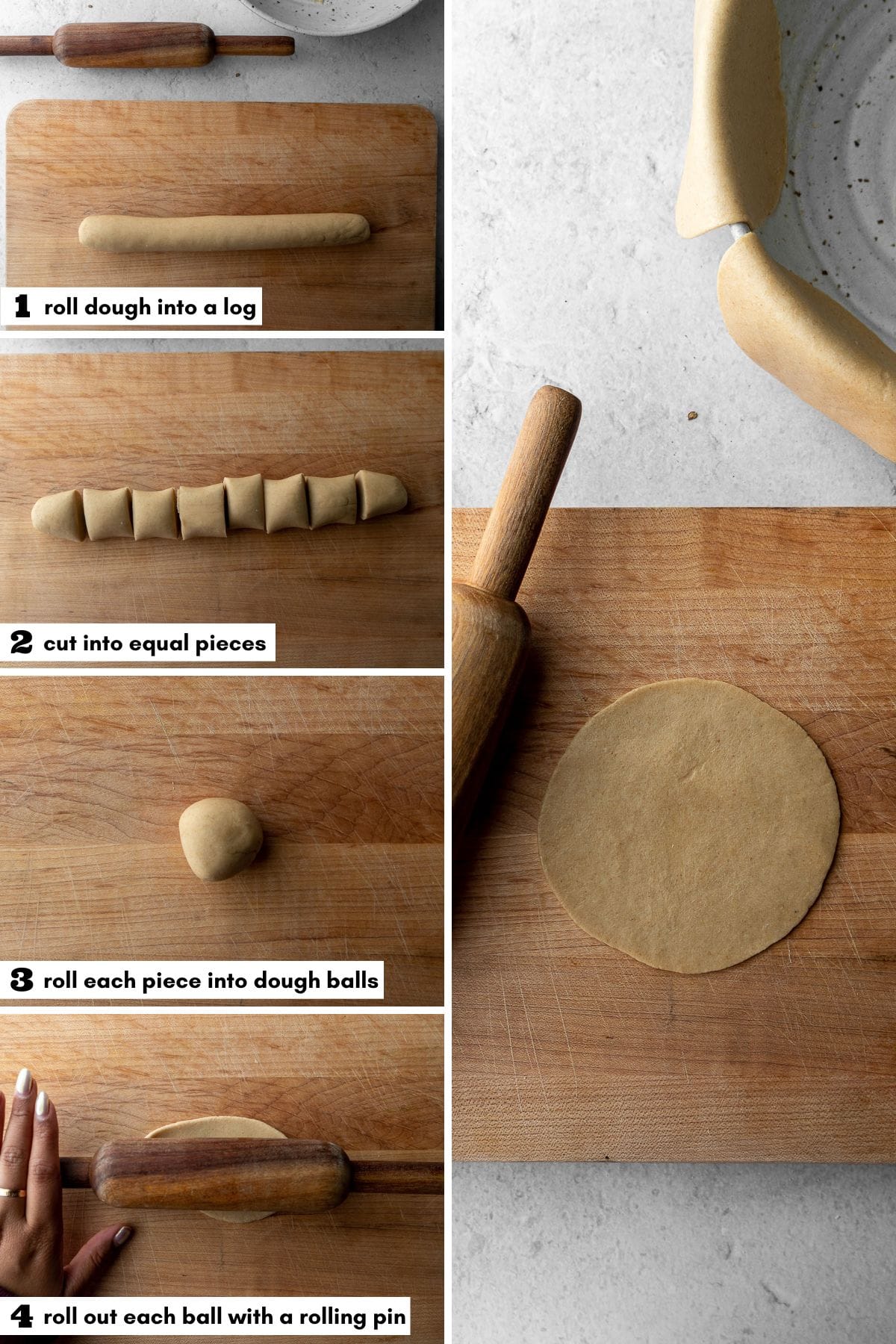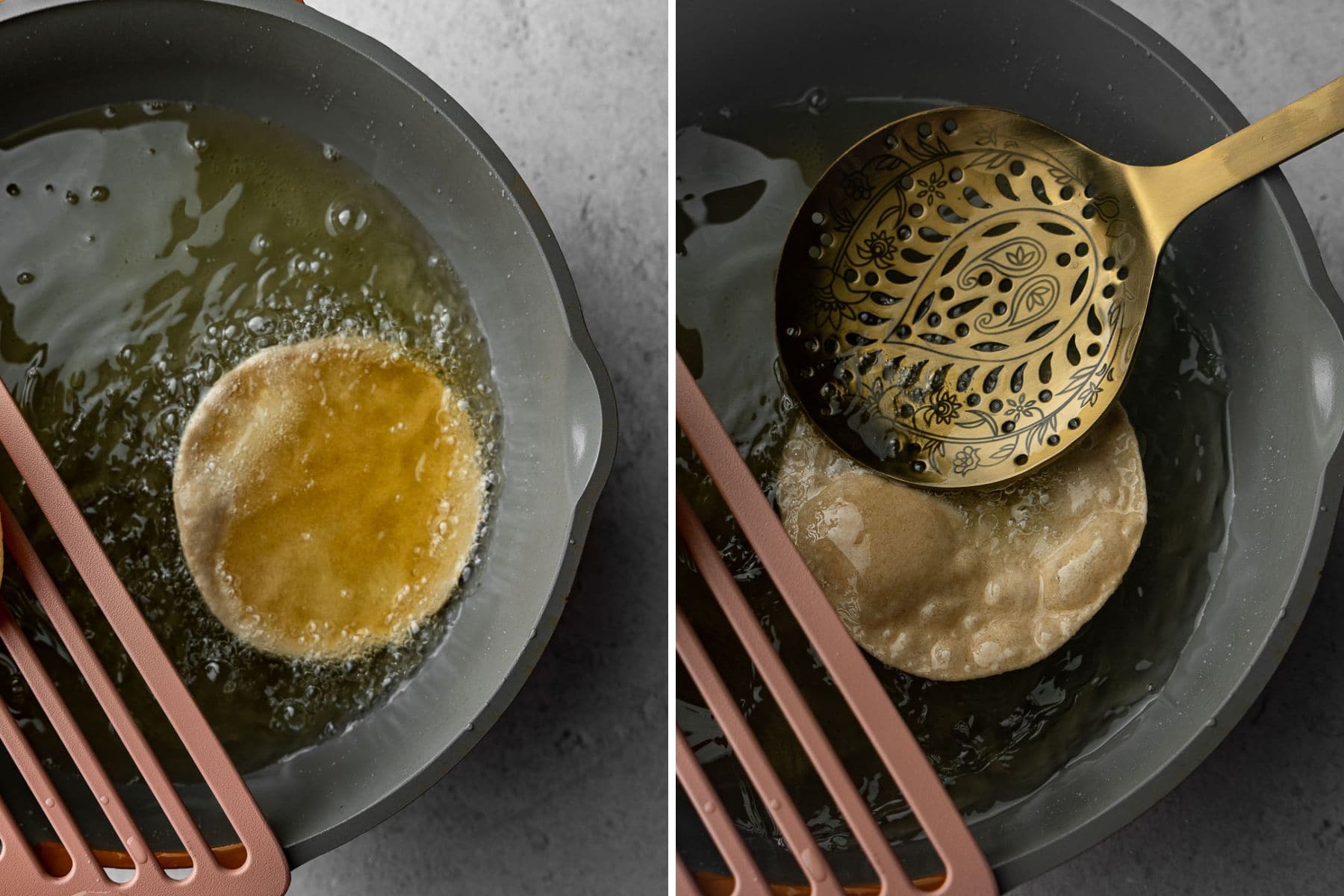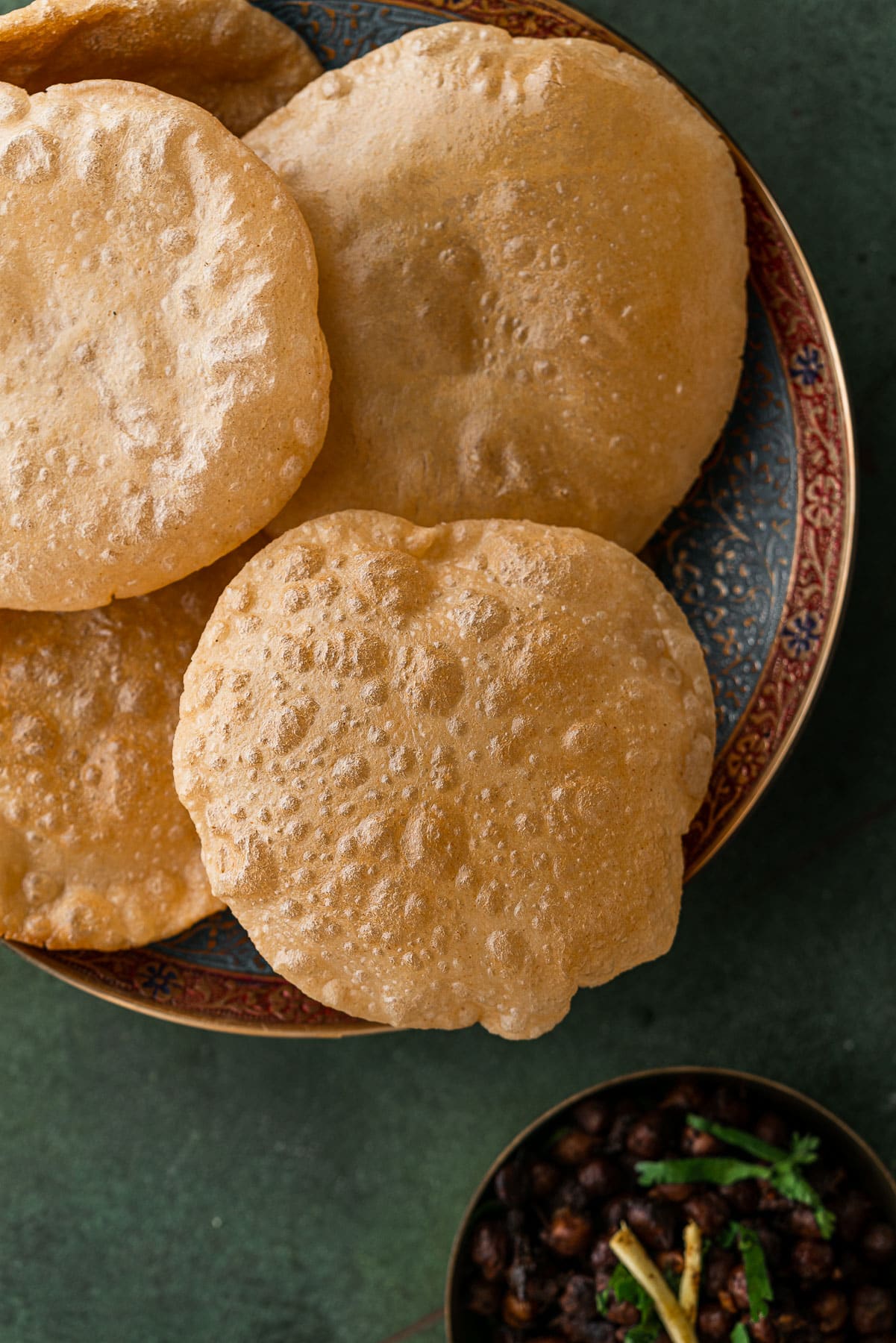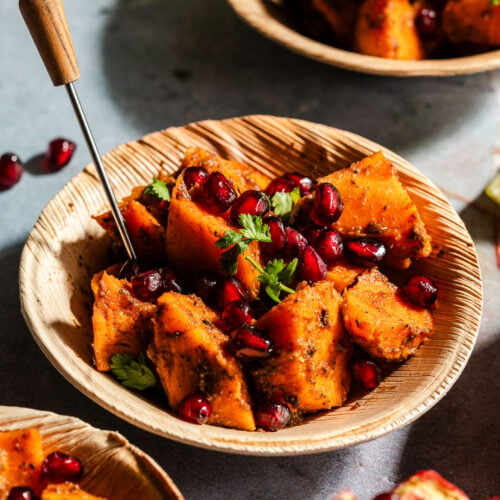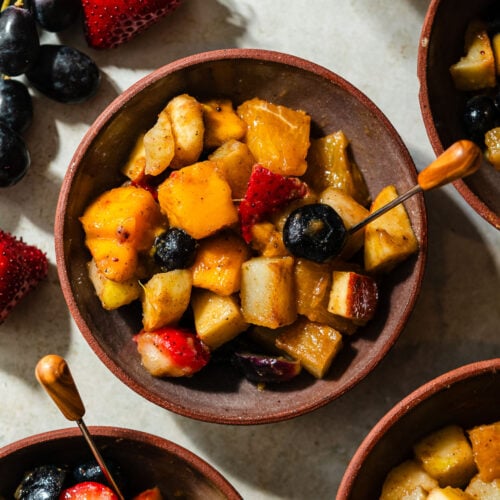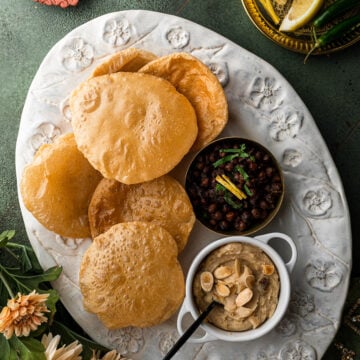Halwa Puri didn’t make an appearance too often on our weekly meal plan, but man did I wish it did. The combo of the savory fried bread with the sweet, soft semolina pudding with a hearty chole or kala chana is nonsensical and absolutely divine! Halwa was always served as a “dessert” to our breakfast, typically after a bowl of Chivda or at the temple as prasad in the afternoon. Add it into the same plate as another brunch classic, Chole Puri, and something amazing happens. It’s so good that you’ll see it across India and Pakistan as a very popular breakfast dish. I was able to order in Halwa Puri all the time from halal restaurants when I around Kensington in Brooklyn which has a lively Muslim population. It’s also definitely a meal to look forward to around Navratri, a Hindu festival occurring in October, especially on Ashtami and Navami as prasad.
What is Halwa Puri
There are three components to Halwa Puri - Halwa Puri is a popular dish in Pakistan and North India. It’s often served for breakfast, or nashta, or at special occasions such as weddings and religious festivals. It’s a comforting brunch dish to enjoy on weekends or with guests. It is also a common street food.
How to Make Halwa Puri
1. How to make Suji ka Halwa
For more in depth information on the history, ingredient substitutions, tips and tricks, and more you can check out this Suji ka Halwa recipe. You’ll need the following ingredients to make a semolina-based pudding. Pretty straightforward and pantry friendly, right? You’ll also need a large nonstick pan that’ll give you enough space for liquid and stirring. As well as a spatula to stir! And you’ll be doing a lot of stirring. So get settled in. Once the heat is turned off, the halwa will continue to thicken a bit further. Allow it a bit of resting time before serving, about five minutes. Garnish with toasty crunchy almonds or cashews, and it’s ready to serve.
2. How to make Puri
For more in depth information on the history, ingredient substitutions, tips and tricks, and more you can check out this Puri recipe. You’ll need the following ingredients to make this Indian deep-fried bread. Atta, or Chapati Flour, is a whole wheat flour used in the Indian subcontinent to make rotis/chapati, parathas, puri, etc. I have tried using all-purpose flour for puris and parathas and the texture is simply not the same. I highly recommend getting atta from a local Indian grocer for the perfect puris. Roll it back and forth a few times with a rolling pin, and then rotates it 90 degrees every few rolls to create the perfect circle. You’re looking to get it fairly thin without being able to see through the dough. Roll out each puri and let them hang off the bowl without touching each other. If you’re a little more skilled, you’ll be able to roll them out and fry at the same time. Carefully slip the puri in via the side of the pot. Use a slotted spoon to gently hold it under the oil for a few seconds, making small circles to ensure the puri stays under the oil. It should slowly start to resist the slotted spoon and begin puffing up on one side. Continue to gently press down on the side that hasn’t quite puffed, so that the steam is forced to spread in the puri. Flip the puri on to the other side. Continue to gently hold the puri down into the oil so the bottom half is completely submerged in the oil. Monitor the bubbles again to know when it’s done. Place it on the plate with a paper towel to drain off excess oil.
Serving Suggestions
To serve, I recommend 1-2 puris, a hearty scoop of the halwa, and a chana. It can also pair with another savory curry, like Arbi Sabzi or Saag Paneer, to eat with the puri. What a lot of people do is put a puri in their open palm, and then fill half of it with sukha kala chana and the other half with halwa. Roll the puri up like a little taquito and eat it all together! The halwa is sweet and the puri is savory… but a chana often accompanies this perfect pair. I highly recommend the Dry Kala Chana I’ve included as optional in the recipe. Other chana options include Kala Chana Masala, with black chickpeas, as well as Chole, a yellow chickpea curry. I also love it with aloo ki bhujia, or potato curry.
More Recipes to try during Festival Season
Recipe
I’d love to know what you thought of this recipe! Don’t forget to leave a comment and ⭐️ star rating below! Thinking about making this recipe? Enter your email and I’ll send it straight to your inbox to save for later. Plus, get new recipe inspiration from me every week! By submitting this form, you consent to receive emails from Masala and Chai.
